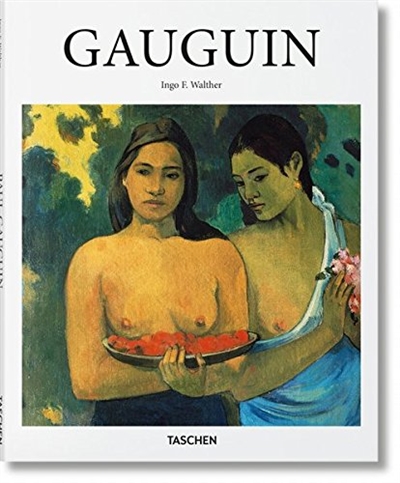en savoir plus

Carte fidélité
Permet à tous ses détenteurs d'obtenir 5% de réduction sur tous les livres lors du retrait en magasin (réduction non cumulable avec les réductions de type étudiant).
Offre également un certain nombre d'avantages auprès de nos partenaires.
Wishlist
Avec les favoris, retrouvez dans un espace les sélections effectuées au fur et à mesure de vos navigations dans le site.
Constituez pour votre usage personnel vos listes de livres en prévisions d'achats futurs et votre sélection d'articles, dossiers, événements, vidéos ou podcasts préférés ou à découvrir plus tard...
Il suffit simplement de cliquer sur "Ajout Favori" sur chaque page qui vous intéresse pour les retrouver ensuite dans votre espace personnel.
Requiert un compte Mollat
Mes Alertes
Requiert un compte Mollat
Paul Gauguin, 1848-1903 : the primitive sophisticate
Auteur : Ingo F. Walther
en savoir plus
Résumé
Présentation de l'oeuvre et du parcours du peintre français du XIXe siècle, de la Bretagne à Tahiti. ©Electre 2025
Lire la Quatrième de couverture
Réduire la Quatrième de couverture
Destination exotic
Paul Gauguin's Pacific visions radiate with colour and sunshine
Paul Gauguin (1848-1903) was not cut out for finance. Nor did he last particularly long in the French Navy, or as a tarpaulin salesman in Copenhagen who did not speak Danish. He began painting in his spare time in 1873 and in 1876 took part in the Paris Salon. Three years later, he was exhibiting alongside Pissarro, Degas, and Monet.
A querulous, hard-drinking individual, Gauguin often called himself a savage. His close but fraught friendship with the similarly temperamental Vincent van Gogh climaxed in a violent incident in 1888, when Van Gogh purportedly confronted Gauguin with a razor blade, and later cut off his own ear. Shortly afterwards, following the completion of a midcareer masterpiece Vision After the Sermon (1888), Gauguin took himself to Tahiti, with the intention of escaping « everything that is artificial and conventional... »
On Tahiti, Gauguin's unfettered joy in the island's nature, native people, and figurative images found expression in a prolific output of paintings and prints. In works such as Woman with a Flower (Vahine no te Tiare, 1891) and Sacred Spring : Sweet Dreams (Nave Nave Moe, 1894), he developed a distinct, Primitivist style that positively oozed with sunshine and colour. In the tradition of exotic sensuality, his thick, buttery lashings of paint lingered in particular over the curves of Tahitian women.
Gauguin died alone, on Tahiti's neighboring Marquesas Islands, with many of his personal papers and belongings dispersed in a local auction. It was not until a smart art dealer began curating and showing Gauguins work in Paris that the artist's profound influence began making itself felt, especially to the new breed of French avant-garde artists, such as Picasso and Matisse. This book offers the essential introduction to the artist's truly colorful life, from the Impressionist salons of 1870s Paris to his final days in the Pacific, productive and passionate to the end.
« Art is either plagiarism or revolution. »
- Paul Gauguin
Fiche Technique
Paru le : 04/02/2017
Thématique : Histoire de la peinture Monographies de peintres
Auteur(s) : Auteur : Ingo F. Walther
Éditeur(s) :
Taschen
Collection(s) : Series 2.0 Basic art
Contributeur(s) : Traducteur : Michael Hulse
Série(s) : Non précisé.
ISBN : 978-3-8365-3223-5
EAN13 : 9783836532235
Reliure : Relié sous jaquette
Pages : 95
Hauteur: 27.0 cm / Largeur 22.0 cm
Épaisseur: 1.4 cm
Poids: 570 g
